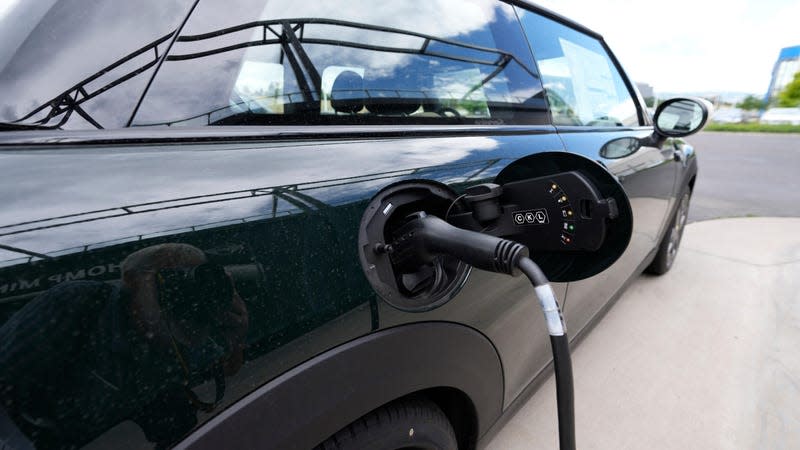Colorado Wants More EVs on the Road, Without a Gas Car Ban

Colorado wants to phase out gas-powered cars by 2050, but unlike trendsetting California, which announced that no new gas-powered car be sold there by 2035, Colorado wants more EVs on the road without a similar ban.
The Colorado Energy Office published a draft of the 2023 EV Plan last week, an update to the existing 2020 EV Plan. It outlines how the state aims for 940,000 electric passenger cars on the road by 2030 and “nearly 100% zero emission light-duty vehicles on the road by 2050.” This new strategy emphasizes electrifying different medium- and heavy-duty vehicles and removing financial challenges to EV ownership.
Read more
Will Toor, the executive director of the Colorado Energy Office, said that the 2023 draft is building on the momentum from EV adoption in the last few years. “The [Colorado] market has grown so much since our last plan. When we adopted the 2020 plan, our EV market share was around 3%. It’s now around 10%,” Toor told Earther.
According to Toor, the 2020 EV plan focused on smaller passenger vehicles. The 2023 draft will, too, but it also set a goal of having 100% of the medium- and heavy-duty vehicles sold by 2050 be zero-emissions vehicles. Those vehicles are the second-largest source of greenhouse gas emissions in the transportation sector, according to the Colorado Department of Transportation. Larger vehicles contribute 22% of road greenhouse gas emissions while only making up 10% of the state’s vehicles, the DoT wrote on its website.
Supporting the electrification of a range of vehicles means the state will need more charging stations. There are currently more than 720 DCFC fast-charging stations and more than 3,700 slower EV charging stations in Colorado, according to an online database. The 2023 draft of the EV plan outlined that the Energy Office aims to have 1,700 fast-charging stations and 5,800 level 2 charging stations throughout Colorado by 2025.
The draft of the new plan offers another alternative to gas-powered cars: electric bicycles. State officials want to help lower-income residents afford e-bikes by considering a statewide e-bike tax credit. Toor explained that including e-bikes into the 2023 EV draft was partially inspired by the enthusiasm for a smaller bike program. The city of Denver launched an e-bike rebate program in April to help more people buy e-bicycles. By October, more than 4,100 Denver residents redeemed vouchers for e-bikes worth more than $4 million through that program, The Denverite reported. “A significant difference from the earlier versions of the plan is a much larger focus on equity,” Toor said about the new addition. “[We are] ensuring that all the programs that we are developing really provide benefits to low-income and disproportionately impacted communities, and to rural Colorado.”
The 2023 plan draft proposes expanding existing tax credits to make EVs even more accessible for Coloradans. Some of the EV models on the market do not meet the requirements for the current federal EV credits, in which buyers can receive up to $7,500 in a federal tax credit. Under those requirements, final assembly of the cars must occur in North America. This will take some car companies a few years to adjust to, Toor said. The new plan recommended an “extension of the light-duty ZEV tax credit through at least 2027,” until manufacturers could catch up to federal requirements.
Colorado residents can submit comments about the draft plan until the last day of 2022. After that, Energy Office will consider new updates depending on the input received from the public. “There’s not a firm deadline, but we anticipate that by the end of January or early February, we will release the final version,” Toor said.
More from Gizmodo
Sign up for Gizmodo's Newsletter. For the latest news, Facebook, Twitter and Instagram.

